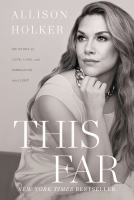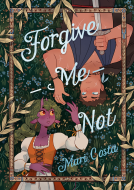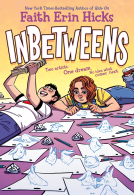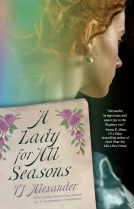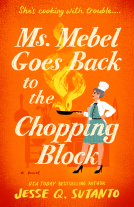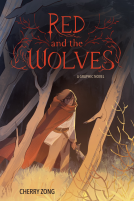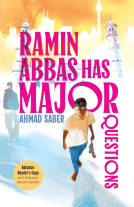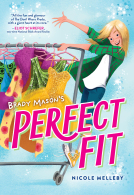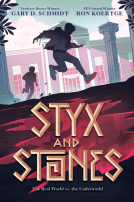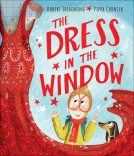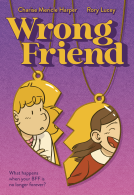
When We Were Alone
by David A. Robertson
This title was previously available on NetGalley and is now archived.
Send NetGalley books directly to your Kindle or Kindle app
1
To read on a Kindle or Kindle app, please add kindle@netgalley.com as an approved email address to receive files in your Amazon account. Click here for step-by-step instructions.
2
Also find your Kindle email address within your Amazon account, and enter it here.
Pub Date Mar 01 2017 | Archive Date Mar 30 2018
Portage & Main Press | HighWater Press
Description
Marketing Plan
-Promotion at national and regional school, library and trade conferences
-National and regional publicity and advertising campaigns
-Promotion at national and regional school, library and trade conferences
Available Editions
| EDITION | Other Format |
| ISBN | 9781553796732 |
| PRICE | $18.95 (USD) |
Average rating from 27 members
Featured Reviews
This is a quiet picture book, that sneaks up on you. There are two levels here, one of a young child asking her grandmother, her kókom, why she does things the way she does. Why does she dress in bright colors, why does she wear a long braid, why does she speak in Cree?
And very simply, her kókom explains about the residential schools where these things were all forbidden.
The residential schools were a horrid part of history, and it is important for children, and adults, to realize that real people were hurt by this policy, and its legacy. It is so good that publishers are coming out with stories to tell about this, and being written by Indigenous people as well, as who better to tell their own story.
Highly recommend this book as a beautiful picture book for libraries, schools, and home libraries. This author has also been doing graphic novels of First Nation history, which are amazing as well.
Brovo to High Water Press for this, and other books they have been brining out about the First Nation experience.
Thanks to Netgalley for making this book available for an honest review.
 Carla J, Reviewer
Carla J, Reviewer
The residential schools were a terrible part of Canadian history, and it is important for children, and adults, to learn about this time, what it did to a proud people and what the fallout is still today.
This picture book tells about the experience of one person during the residential school time in very simple terms. A little girl is helping her grandmother in the garden and begins to ask her questions. "Kókom, why do you dress in bright colors, why do you wear a long braid, why do you speak in Cree, why do you spend so much time with your brother?" Her kókom very simply explains about the residential schools where these things were all forbidden and how she, her friends and her brother tried to recreate so many things they had to do without when they were alone.
I recommend this book to public, school, class and home libraries. This would be a great book to use when studying aboriginal people and their past in Canada.
Thanks to Netgalley and the publisher for allowing me to read and review this book.
 Tara H, Librarian
Tara H, Librarian
A young girl is helping her grandmother in the garden. She asks here why she wears bright colors, and why she wears a braid and why she talks in Cree. With each question her grandmother tells about when she went to school and all the things that they weren't allowed to do like wear bright colors, have long hair and speak their native language. It's a very sweet and at the same time sad book.
 Librarian 71930
Librarian 71930
Stunning and searing. A must read. Children need to learn about the schools and what was done to Native children not so long ago.
 Jaye T, Educator
Jaye T, Educator
David Alexander Robertson has created a marvelous story for young readers. The illustrations and language in the text is beautiful and offers readers a glimpse into indigenous culture while calling out the colonization endured. I highly recommend this one!
 Nadia A, Reviewer
Nadia A, Reviewer
A smart picture book that teaches an important part of Canadian history.
 Laken H, Librarian
Laken H, Librarian
As a young Native American girl and her grandmother spend time together the granddaughter notices and questions her grandmother about the things about her that seem different. Why does her grandmother wear bright, colorful clothes? Why does she wear her hair long? In response to her questions the grandmother offers honest explanations that all have to do with the time she spent in a residential school as a child. In these schools she and and many other children were cut off from their family, language, and customs, but when the teachers weren't watching they found ways to hold onto their culture. The story paints a portrait of a resilient woman who fought to hold onto her identity and now shares her story with her grandchild. It's a quiet and thoughtful book that skillfully introduces a difficult topic with kindness and honesty, and would be an excellent choice to begin a discussion about residential schools and Native American history.
 Natalie K, Reviewer
Natalie K, Reviewer
Full review with the illustrations:
https://bookspoils.wordpress.com/2016/10/15/review-when-we-were-alone-by-david-alexander-robertson/
https://www.goodreads.com/review/show/1778135310
The first thing I noticed upon starting When We Were Alone were the gorgeous illustrations that were detailed in all the right places. It was eye-bending in its beauty.
This picture book begins with a young girl helping out in her grandmother's garden, when she begins to notice things that make her curious.
Why does her grandmother have long braided hair and beautifully colored clothing? Why does she speak another language and spend so much time with her family?
As she asks her grandmother about these things, she is told about life in a residential school a long time ago, where all of these things were taken away.
"They wanted us to look like everyone else."
Along with the granddaughter, we get to be taken into the past and present of her grandmother's life and see the freedom she yearned to reach... and eventually received.
When We Were Alone was an exceptional story about a difficult time in history and, ultimately, one of empowerment and strength. And I've reread it a couple of times now for exactly those reasons.
ARC kindly provided by the publisher in exchange for an honest review.
4/5 stars
This is a great book. The language and the art are equally beautiful. We'll be looking forward to getting this for our library.
 Philip C, Reviewer
Philip C, Reviewer
4.25ish stars.
A worthy historical tale told powerfully through the storytelling medium of the picture book.
Sometimes I think we fear that certain subjects are too sensitive or heavy to expose children to. I believe it's really just a matter of how things are presented. In this story a Cree grandmother sensitively explains the proud traditions she carries out to her curious granddaughter. The little girl's kókom is given a voice as the book relates, without excessive bitterness or accusation, her experiences in the residential schools that are now part of Canada's history where she was forced to assimilate into Euro-Canadian culture. Far from being victims, however, the kókom as a young girl and her friends found ways to preserve their heritage in other ways.
The pallet of Julie Flett's finely crafted illustrations is gorgeous and the pictures bring life to Robertson's story.
This would be a great tool to use in school as well as a beautiful book to keep on the shelf at home.
Illustrations: 4.5
Story: 4
This title tackled some very delicate issues with respect, and bravery that was exactly appropriate for a children's novel. The repetition of "When I was your age" creates a lovely cadence that carries the story naturally. Also, from an adult's point of view, one can easily imagine that a child will hear that phrase from their elders, quite often! This tactic naturally lends realism to the story.
The art work? Gorgeous. The color pallet and imagery complement the story perfectly and would make reading with a young one very easy and engrossing for them.
Ultimately, this is an excellent read to introduce a child to a difficult topic. Cultural repression, residential schools, and Canadian native history. If you are looking for a more intelligent read to gift to a young reader, this would be it.
 Reviewer 80714
Reviewer 80714
This story absolutely met my expectations! With quiet innocence and inquisitiveness, we learn from a granddaughter's perspective why her grandmother does things the way she does. Her kókom responds with an elegant reverie that resonates and lingers. Like the art, the story is spare and simple, with bright and powerful moments of color that make you go, "Ohhhh." (For those who recall Arsenio Hall's catchphrase, "Things that make you go hmmm..." <-- that's what I'm talking about.) If you are familiar with Christy Jordan-Fenton's & Margaret Pokiak-Fenton's heart-achingly crafted stories, you're already familiar with a Native's experience traveling away from family for schooling. This is another fine example that shows resilience in the face of past wrongs. We need more stories like this.
 Sharon T, Reviewer
Sharon T, Reviewer
When We Were Alone is a picturebook written by David Alexander Robertson and illustrated by Julie Flett. It is currently scheduled for release on December 31 2016. When a young girl helps tend to her grandmother’s garden, she begins to notice things about her grandmother that make her curious. Why does her grandmother have long braided hair and wear beautifully colored clothing? Why does she speak another language and spend so much time with her family? As she asks her grandmother about these things, she is told about life in a residential school a long time ago, where everything was taken away.
When We Were Alone is a wonderful look at how much the younger generation can learn about their heritage and the lives of their family by asking questions. I think it is important for us all to understand what our elders and ancestors went through, and how other cultures have faced. this picturebook offers a little of each. Whether your family tree includes Cree (or any other Native American Heritage) or not, it is important to know what they faced, and how any group has been treated in the past or present. Not only does this book offer a lesson on heritage and history, it can also help with empathy and understanding. Perhaps a better understanding of our shared history can help us understand how others feel and prevent similar treatment of groups still or now considered 'other'. I would highly recommend adding this to any library collection. It can start many important conversations that are currently very relevant to the current state of the world and necessary.
I loved this picture book about a granddaughter and her grandmother. The grandmother explains how many of her choices as a grown up are made because of her experiences when she was forcibly taken from her Native American family and assimilated into white society. The art work in this one is lovely and inviting and the text is thought provoking without being too scary.
 Librarian 11639
Librarian 11639
I love Julie Flett's art, and I am always interested in reading anything she touches.
 Cheriee W, Reviewer
Cheriee W, Reviewer
I would have picked up and read this book just because, you know, Julie Flett! I adore her illustrations.
In this narrative, a young girl spends time with her Nokom (grandmother) and wonders why she does the things she does. The girl questions how she dresses, wears her hair, why she speaks Cree, and spends so much time with her brother. We readers learn, along with the girl, that this is how her Nokom celebrates her life in contrast to her experiences in residential school.
I highly recommend this one for all libraries.
 Hannah W, Librarian
Hannah W, Librarian
This is the second book I've read by David Alexander Robertson, the first being his graphic novel, Will I See?, for teenagers and adults. He's a very powerful author who knows how to address both historical and modern issues of indigenous people in an accessible way.
Premise: A little girl is spending the day with her kókom (grandmother). As she notices things about her kókom, she asks questions about them: "Nókom, why do you wear so many colours? / “Nókom, why do you wear your hair so long? / etc.” Each time, the girl's grandmother answers with an explanation of the residential school to which she was taken as a child and how the people running the school tried to remove the influences of the native peoples from the children. “They wanted us to look like everybody else.” She also counters with an explanation of how the children made it bearable and kept their heritage and happiness alive. These are the reasons she honors her heritage now, she says: “Now,” Nókom said, “I always wear the most beautiful colours. / “Now,” Nókom said, “I always wear my hair very long.” And so on. The book ends with the little girl holding hands with her grandmother and great-uncle, impressing a message of strength and pride in one's self, heritage, and family.
This is a brilliant way to start a discussion with children about the history of residential schools to which First Nation children were sent. It's honest without being too scary or graphic. And the illustrations by Julie Flett are simple but gorgeous! I've been trying to read books to my son that represent a variety of cultures, and this is a great place to start with the Cree in Canada and the United States. I would recommend this book to anyone who has the chance to read to a child, or to anyone who just enjoys reading picture books!
 Educator 191087
Educator 191087
Lovely, informative and important book for readers of all ages..
 Kay S, Reviewer
Kay S, Reviewer
Six Stars! Amazing wonderful book! Both the author, David Alexander Robertson, and the illustrator, Julie Flett, have done a top notch job in creating this book. When We Were Alone appears to be a children's book but should be read by people of all ages! Love it! |It is a tale of the experience of a Cree elder in a residential school that never, ever mentions the words “residential school”. Although the elder describes many of her experiences to her young granddaughter there is no expression of bitterness or other negative emotions.
The illustrations are magnificent!
I recommend this book to everyone, it would be an especially great addition to an Aboriginal classroom or a Native Studies course. It opens the door to many discussions in a gentle, yet highly effective manner.
This book is poetic and lyrical, full of insight and also warmth. I am so grateful for the way children's books are approaching hard topics in sensitive ways because our kids need to know our history.
This book is a beautiful story about a granddaughter gardening with her grandmother, asking her about why she wears beautiful clothes or why she speaks in Cree. Grandmother referenced her residential school and why she celebrates her heritage now, because she wasn't always able to.
I did not know much about the residential schools but after this book, I did my own research. I think this is an incredible movement with children's literature, peaking curiosity in both children and adults.
When We Were Alone is a sweet story about a little girl who is gardening with her grandmother and begins to ask her questions. Her grandmother tells her tales of her lie in boarding school, explaining that she wears coloring clothes because she wasn't allowed to in school. Seeing the granddaughter begin to understanding her grandmother better, and learn about her past was really sweet and interesting. A great story to teach children about differences in history and culture.
Readers who liked this book also liked:
Allison Holker
Biographies & Memoirs, Health, Mind & Body, Parenting, Families, Relationships
Mia Jay Boulton; Laurel Boulton
Comics, Graphic Novels, Manga, Romance, Sci Fi & Fantasy
Charise Mericle Harper
Children's Nonfiction, Comics, Graphic Novels, Manga, Middle Grade
